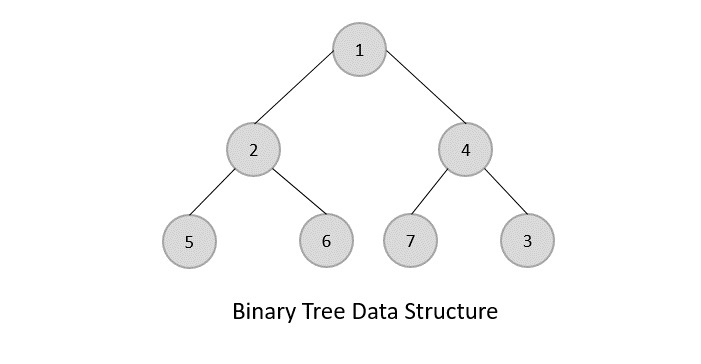A binary tree is a data structure which can be represented in the form of a hierarchy of which each element is called node, the initial node being called root.
Path refers to the sequence of nodes along the edges of a tree.
The node at the top of the tree is called root. There is only one root per tree and one path from the root node to any node.
Any node except the root node has one edge upward to a node called parent.
The node below a given node connected by its edge downward is called its child node.
The node which does not have any child node is called the leaf node.
Subtree represents the descendants of a node.
Visiting refers to checking the value of a node when control is on the node.
Traversing means passing through nodes in a specific order.
Level of a node represents the generation of a node. If the root node is at level 0, then its next child node is at level 1, its grandchild is at level 2, and so on.
Key represents a value of a node based on which a search operation is to be carried out for a node.
/**
* struct binary_tree_s - Binary tree node
*
* @n: Integer stored in the node
* @parent: Pointer to the parent node
* @left: Pointer to the left child node
* @right: Pointer to the right child node
*/
struct binary_tree_s
{
int n;
struct binary_tree_s *parent;
struct binary_tree_s *left;
struct binary_tree_s *right;
};
typedef struct binary_tree_s binary_tree_t;typedef struct binary_tree_s bst_t;typedef struct binary_tree_s avl_t;typedef struct binary_tree_s heap_t;Used function for printing the binary tree;
- Binary tree
- Data Structure and Algorithms - Tree
- Tree Traversal
- Binary Search Tree
- Data structures: Binary Tree
By Inès & Khouloud Software engineers at HolbertonSchool®️
 Holberton School C - Binary trees Project
Holberton School C - Binary trees Project